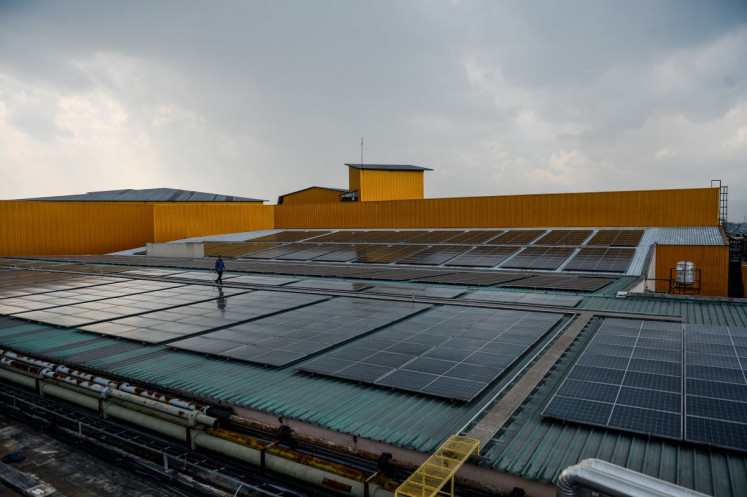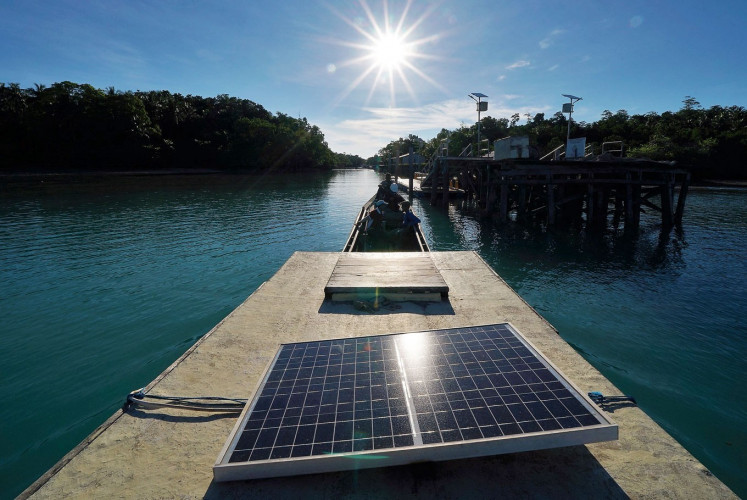Popular Reads
Top Results
Can't find what you're looking for?
View all search resultsPopular Reads
Top Results
Can't find what you're looking for?
View all search resultsIndonesia's demographic dividend: A future at risk
The government seems uncertain about how to optimize the country's demographic potential to help Indonesia escape the middle-income trap.
Change text size
Gift Premium Articles
to Anyone
F
ormer president Joko “Jokowi” Widodo frequently highlighted Indonesia's demographic dividend, a period when the working-age population exceeds the number of dependents. This concept even became the foundation of the Long-Term National Development Plan (RPJPN) aimed at achieving a “Golden Indonesia” by 2045. However, under President Prabowo Subianto, this crucial topic has yet to be addressed.
The working-age population should be the driving force of Indonesia's economy from now until 2045. However, this demographic is stagnating and the government seems uncertain about how to optimize this potential to help Indonesia escape the middle-income trap.
President Prabowo aims to achieve an ambitious economic growth target of 8 percent, which seems too ambitious compared to the average growth of five percent over the past decade. The weakening economic power of the working-age population is reflected in the declining proportion of household consumption, which contributed only 53.08 percent to gross domestic product in the third quarter of 2024 year-on-year (yoy), against 54.93 percent in the first quarter yoy.
On the production side, the manufacturing sector, which is the largest contributor to economic growth at 19.03 percent, has been contracting. Additionally, worker layoffs have become a key indicator of the collapse in Indonesia's manufacturing sector. By October, a staggering 63,947 workers had been laid off, a significant increase compared to 45,576 in 2023 and 11,626 in 2022.
While a large working-age population should drive economic growth and enhance overall societal welfare, the reality is quite the opposite. Indonesia's working-age population is experiencing a decline in welfare status. The proportion of the middle class has decreased over the past five years, from 21.45 percent in 2019 to 17.33 percent in 2024. This decline is mirrored by an increase in the “aspiring middle class,” which rose from 20.56 percent in 2019 to 24.23 percent in 2024.
Correspondingly, a consumer survey by Bank Indonesia revealed that by September, households spent 74.1 percent of their income on consumption, with only 15.3 percent allocated to savings, the lowest level recorded during the January-September 2024 period, down from 15.7 percent in August 2024. This “savings eating” phenomenon illustrates the public's reliance on savings to meet daily consumption needs.
Interestingly, although Indonesia's Open Unemployment Rate (TPT) in August was only 7.47 percent, down from 7.86 percent in August 2023, there was a significant increase in the proportion of underemployed workers. Underemployment refers to those working less than normal hours (fewer than 35 hours per week) and still seeking or willing to accept additional work. In August, underemployment reached 8 percent of the workforce, up from 6.68 percent in 2023 and 6.32 percent in 2022. This means that out of every 100 employed individuals, around eight are underemployed. This phenomenon may be linked to layoffs that force workers to take available jobs that do not meet their income needs, compelling them to dip into their savings. However, this hypothesis still needs deeper research.



















